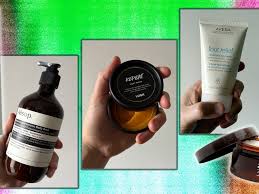
🌿 How to Get Rid of Hard Skin on Feet Naturally: Your Complete At-Home Guide to Silky Smooth Soles
Feet often go unnoticed until the moment we slip on sandals and notice they’re dry, cracked, and rough—an unpleasant surprise when warm weather calls for bare soles and pretty toes.
While we pamper our faces and hands with the finest lotions, our feet, which carry our weight and take us everywhere, are often left neglected until it’s too late.
If you’re dealing with rough, thickened, or flaky patches of skin on your feet, know that you’re definitely not alone—it’s one of the most common foot concerns.
The good news? You don’t need an expensive spa day or harsh salon treatments to smooth and soften your soles—you can do it all naturally, right at home.
With consistent care, natural remedies, and just a few changes to your weekly self-care routine, you can completely transform your feet and restore softness.
Let’s dive into the causes of hard skin, how to treat it naturally and effectively, and the best ways to prevent it from coming back for good.
🧶 Why Does Hard Skin Appear on Our Feet in the First Place?
Hard skin—often referred to as calluses—forms as a defense mechanism in response to friction, pressure, or irritation over time.
You’ll usually find these thick patches of skin on weight-bearing or high-friction areas, such as the heels, balls of the feet, and sides of the toes.
Wearing ill-fitting shoes, standing for long periods, or walking barefoot on hard surfaces are all factors that can contribute to the buildup.
In short, your body is trying to protect itself—but too much protection can leave you with hardened, dry, and sometimes painful skin.
If left untreated, hard skin can lead to cracks, bleeding, pain, and even infection, especially in those with diabetes or poor circulation.
Addressing it early with natural methods can prevent discomfort and help you maintain soft, smooth feet throughout the year.
🛁 Step-by-Step: How to Get Rid of Hard Skin on Feet Naturally and Safely
The best natural approach to smoother soles includes softening, exfoliating, moisturizing, and protecting—done consistently and gently.
Here are the most effective, expert-approved ways to treat hard skin from the comfort of your own home without harming your feet.
1️⃣ Soak Your Feet First to Soften the Skin
Start with a warm foot soak to hydrate and soften the tough skin, making it easier to remove without damaging the healthy skin underneath.
Fill a basin with warm (not hot) water and soak your feet for 15 to 20 minutes—you can add Epsom salts, apple cider vinegar, or tea tree oil for added benefits.
The warm water loosens dead skin cells, while the added ingredients can bring soothing, antibacterial, and deodorizing effects.
Soaking two to three times per week is ideal for long-term foot health, especially if you’re prone to thick calluses or cracked heels.
2️⃣ Gently Exfoliate with a Pumice Stone or Foot File
Once your feet are softened, gently buff the hard skin using a pumice stone or foot file with light, circular motions.
Avoid over-scrubbing or pressing too hard—doing so can cause tiny cuts or make the skin tougher over time.
Focus on thickened areas like the heel or ball of the foot, but never use exfoliating tools on open wounds, blisters, or broken skin.
Limit exfoliation to once or twice a week, depending on how quickly your skin builds up—gentle, regular care is more effective than aggressive removal.
3️⃣ Apply a Deeply Moisturizing Natural Foot Cream or Oil
Immediately after exfoliation, apply a generous layer of moisturizer to help seal in hydration and promote healing.
Look for rich natural oils like coconut oil, olive oil, or shea butter—they deeply nourish, restore softness, and contain anti-inflammatory properties.
For intense hydration, you can apply a thick foot balm or Vaseline and cover your feet with cotton socks overnight to lock in the moisture.
Doing this weekly can dramatically improve texture and reduce discomfort caused by dryness, especially during colder seasons.
4️⃣ Stick to a Simple but Consistent Routine
Transforming dry, rough feet into soft, smooth ones doesn’t happen in a day—it requires regular care and maintenance.
Incorporate foot care into your weekly self-care plan: soak, exfoliate, and moisturize consistently for lasting results.
Wear clean, breathable socks daily, and choose supportive shoes that reduce friction and pressure on your feet.
Doing daily self-checks can also help you catch issues early, such as cracked heels or fungal infections, before they worsen.
💡 Natural DIY Remedies for Hard Skin Using Kitchen Ingredients
Prefer homemade remedies? You’ll love these soothing, affordable treatments using ingredients you already have in your pantry.
Oatmeal and Milk Foot Mask
Mix equal parts finely ground oats and warm milk into a thick paste and apply it generously to clean feet.
Leave on for 20–30 minutes, then gently massage in circular motions before rinsing with warm water.
Oatmeal calms and exfoliates, while the lactic acid in milk breaks down dead skin and leaves your feet soft and fresh.
Sea Salt and Olive Oil Scrub
Combine two tablespoons of coarse sea salt with two tablespoons of olive oil and a splash of lemon juice.
Massage into dry areas using circular motions to slough off dead skin, then rinse and follow with a thick cream.
This scrub not only removes buildup but also nourishes your feet, leaving them silky and hydrated.
Banana and Honey Foot Mask
Mash one ripe banana with a tablespoon of raw honey to create a creamy, hydrating mask for dry, tired feet.
Apply the mixture evenly, wrap your feet with cling film or towels, and leave it on for 15–20 minutes before rinsing.
Bananas are rich in potassium and moisture, while honey heals and locks in hydration naturally.
👎 Why You Should Never Cut or Shave Hard Skin
It might seem faster to slice away thick skin with a blade or razor, but this can do far more harm than good.
Cutting hard skin increases the risk of injury, infection, and deeper cracks—especially if the skin is thick and dry.
It can also stimulate the skin to rebuild even thicker, tougher patches, worsening the problem in the long run.
Stick to natural exfoliation and softening methods, and if the problem persists, consult a professional podiatrist for help.
🌙 Overnight Treatments for Baby-Soft Feet by Morning
Want to wake up to silky-smooth feet? Overnight foot masks or moisturization techniques are a dream come true.
After soaking and exfoliating, apply a thick layer of foot cream or petroleum jelly and cover with clean cotton socks.
The socks help seal in the moisture while you sleep, giving the cream hours to penetrate deep into the skin’s layers.
Repeat this once or twice weekly for consistently soft results, especially before big events or sandal weather.
🗓 Weekly Foot Care Routine You Can Actually Stick To
Monday: Quick wash and moisturize after your morning or evening shower—easy and effective.
Wednesday: Full foot soak, gentle exfoliation with a pumice stone, and nourishing moisturizer.
Friday: Use a homemade scrub like salt and oil, apply heel balm, and wear socks overnight.
Sunday: Check for dryness, cracks, or irritation, trim toenails, and apply nail oil or polish.
Consistency—not perfection—is the key to seeing real, long-lasting improvement in the texture of your feet.
👟 Smart Footwear Tips to Prevent Hard Skin from Returning
Wearing the wrong shoes is one of the biggest reasons people develop thick, hard skin on their feet in the first place.
Avoid flip flops, flats with no arch support, or tight shoes that rub against pressure points for hours at a time.
Choose shoes with good cushioning, breathable fabrics, and supportive soles that distribute weight evenly.
Switch up your shoes throughout the week, and always wear socks made from moisture-wicking or natural cotton fibers.
🧴 Best Ingredients to Look for in Foot Creams and Balms
Some ingredients work better than others when it comes to restoring soft, smooth feet—here’s what to look for.
Urea: A powerful humectant that softens thick skin and draws moisture deep into dry layers.
Shea Butter: Rich in vitamins A and E, it nourishes, heals, and protects dry or cracked skin.
Lactic Acid: Gently exfoliates while hydrating—perfect for thickened skin or rough patches.
Tea Tree Oil: Natural antibacterial and antifungal benefits make it perfect for tired, irritated feet.
Vitamin E: Soothes inflammation, repairs skin damage, and improves overall elasticity and tone.
💬 Final Thoughts: Your Feet Deserve the Same TLC as the Rest of You
Your feet do more than just get you from point A to B—they support your entire body and absorb impact with every step.
Neglecting foot care doesn’t just lead to aesthetic concerns; it can also cause pain, infection, or long-term issues.
Thankfully, keeping your feet healthy and beautiful is entirely possible with just a few minutes of weekly attention.
Whether you’re prepping for a vacation, healing from winter dryness, or simply giving yourself some love, don’t skip foot care.
With natural treatments, regular exfoliation, and quality moisturizers, you can keep your soles soft all year long—no spa needed.
So go ahead, light a candle, slip your feet into a warm soak, and give them the love they’ve always deserved.
They’ve carried you through life—now it’s your turn to return the favor with a little natural self-care.


